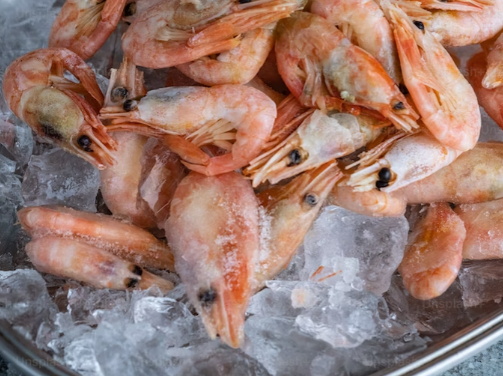


According to the latest data from the US National Oceanic and Atmospheric Administration (NOAA), in May 2023 the US imported 62,401 tons of frozen shrimp products, a year-on-year decrease of 17%, and the import value was US$524 million, a year-on-year decrease of 12%. In May, the unit price of shrimp imported from the United States was $8.39/kg, down 12% year-on-year and up 2% month-on-month.
From January to May this year, the United States imported a total of 299,724 tons of shrimp products, a year-on-year decrease of 18%, and the import value was about US$2.5 billion, a year-on-year decrease of 29%.
It is worth noting that the import figures of the top three suppliers to the United States (India, Ecuador and Indonesia) have all declined significantly.
Among them, the Indian shrimp trade volume in May was 21,767 tons, a year-on-year decrease of 12%, accounting for 35% of the US import market share; the price was $8.20/kg, lower than the $9.37/kg in the same period last year. In the first five months, India exported 105,989 tons of shrimp products to the United States, a year-on-year decrease of 12%, and the export value was US$863 million, a year-on-year decrease of 25%.
Ecuadorian shrimp sales are also on the decline. imports in May were 16,590t, down 8% year-on-year, accounting for 27% of the market. The import value was US$114 million, a year-on-year decrease of 17%. Shrimp prices in Ecuador are low, with an average price of $6.85/kg in May, down 10% year-on-year. In the first five months, Ecuador exported 81,707 tons of white shrimp to the United States, a year-on-year decrease of 1%, and the export value was US$551 million, a year-on-year decrease of 14%.
Indonesia is the third largest supplier of imported shrimp to the United States. In May, the sales volume was 13M793 tons, a year-on-year decrease of 17%, and the trade volume was US$111 million, a year-on-year decrease of 33%. In the first five months, Indonesia exported 64,279 tons of shrimp products to the United States, a year-on-year decrease of 25%, and the export value was US$523 million, a year-on-year decrease of 36%.
The volume of Chinese shrimp exported to the United States continued to shrink. In May, the export volume was only 339 tons, a year-on-year decrease of 48%, and the export value was about 2 million US dollars, a year-on-year decrease of 52%. The average price of Chinese shrimp in May was $5.95/kg, down 8% year-on-year. In the first five months, China exported 1,730 tons of shrimp products to the United States, a year-on-year decrease of 33%, and the export value was about US$10 million, a year-on-year decrease of 33%. The tariff amount was as high as US$2.5 million.
Exports from some other countries maintained growth, including Mexico (+11%), Saudi Arabia (+20%), Honduras (+37%), Spain (+33%), New Caledonia (+100 %) and Nicaragua (+4,325%). Except for Mexico, the export base of other countries is low, so the volume appears to be negligible.
Siam Canadian CEO Jim Gulkin commented that if there is no large-scale purchase boom at the end of summer, the downward trend of US imports may continue into October.
"Currently, prices and shipping costs in Asia and South America are basically lower than production costs. As long as importers, retailers and end consumers start to buy in large quantities, the prices at the origin can rise immediately." Gulkin said.
However, the question is, when will the buying boom come?
"The import volume in the United States in the past year has been far below the average level, which means that the inventory is getting lower and lower, but buyers are still very cautious, and many people are still waiting, and only place orders when they fall to what they think is the lowest price. However, prices are already very low and they haven't acted," Gulkin said.
"The price of shrimp is almost at the bottom. If retailers, wholesalers or end customers need to carry out marketing from September to January-February next year, they should take action immediately. once the purchase starts, the price will increase. Next will be A long upward cycle, possibly more than a year," Gulkin said.
Need help or have a question?
Send mail